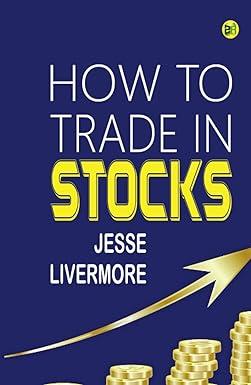Question
Stock A has a beta of 1.25 and a standard deviation of returns of 15%. Stock B has a beta of 1.63 and a standard
Stock A has a beta of 1.25 and a standard deviation of returns of 15%. Stock B has a beta of 1.63 and a standard deviation of returns of 12%. If the market risk premium increases,
- A. the required returns on stocks A and B will remain the same.
- B. the required returns on stocks A and B will increase by the same amount.
- C. the required return on stock A will decrease more than that on stock B.
- D. the required return on stock A will increase more than that on stock B.
- E. the required return on stock B will increase more than that on stock A.
A typical measure for the risk-free rate of return is the
- A. U.S. Treasury bill rate.
- B. federal funds rate.
- C. short-term BBB-rated bond rate.
- D. 30-year fixed-rate mortgage rate
- E. prime lending rate.
A stock has an expected return of 10% with a standard deviation of 7%. If returns are normally distributed, then approximately two-thirds of the time the return on this stock will be
- A. between -13% and 20%.
- B. between 7% and 10%.
- C. between -4% and 24%.
- D. between 3% and 17%.
The beta of a risk-free asset is ___; the beta of a market portfolio is ___.
- A. zero; zero
- B. zero; one
- C. one; zero
- D. one; one
- E. one; two
Portfolio risk is typically measured by ________ while the risk of a single investment is measured by ________.
- A. beta; standard deviation
- B. beta; slope of the characteristic line
- C. standard deviation; beta
- D. security market line; standard deviation
- E. risk-free rate; market risk premium
Which of the following types of risk is diversifiable?
- A. systematic risk
- B. market risk
- C. unsystematic, or company-specific risk
- D. standard risk
- E. betagenic, or ecocentric risk
What is the name of the theoretical model that financial managers use to measure a required rate of return on a stock?
- A. the capital asset pricing model
- B. the standard deviation
- C. the coefficient of variation
- D. the MIRR
- E. the variance
You are considering buying some stock ABC, Inc. Which of the following are examples of non-diversifiable risks? I. Risk resulting from a general decline in the stock market. II. Risk resulting from a possible increase in income taxes. III. Risk resulting from an explosion at an ABC's production facility. IV. Risk resulting from a pending lawsuit against ABC.
- A. III and IV
- B. I and II
- C. II and III
- D. II, III, and IV
- E. I, II, III, and IV
If a stock's beta is zero, the stock's required return is
- A. equal the risk-free rate
- B. equal the required return on the market portfolio.
- C. above the required return on the market portfolio
- D. guaranteed (has no variation at all)
- E. zero
How can investors reduce risk without sacrificing an expected return?
- A. Increase the amount of money invested in the portfolio.
- B. Wait until the stock market rises.
- C. Purchase stocks with high standard deviations.
- D. Purchase stocks with high betas.
- E. Purchase a variety of securities; i.e., diversify.
Step by Step Solution
There are 3 Steps involved in it
Step: 1

Get Instant Access to Expert-Tailored Solutions
See step-by-step solutions with expert insights and AI powered tools for academic success
Step: 2

Step: 3

Ace Your Homework with AI
Get the answers you need in no time with our AI-driven, step-by-step assistance
Get Started


